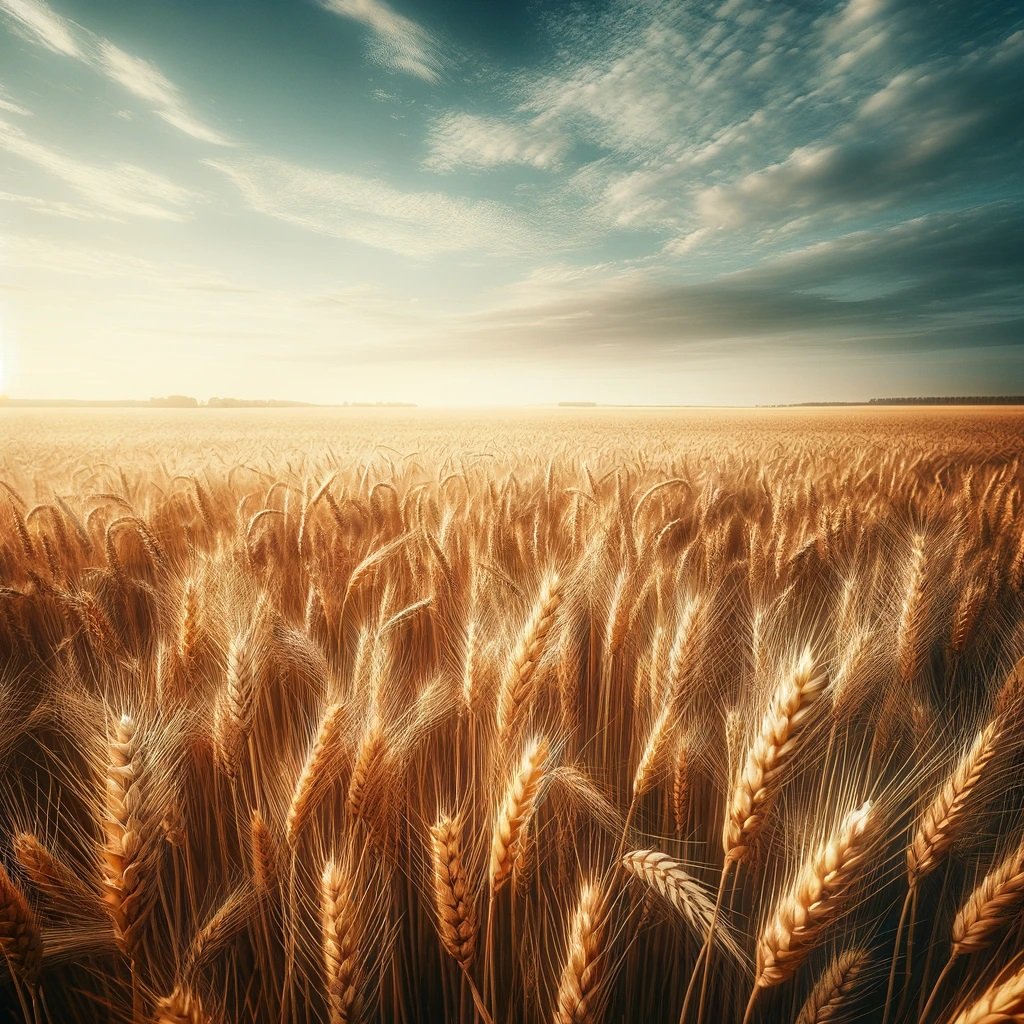Wheat
Wheat is a staple cereal grain, vital for its nutritional value and extensive cultivation worldwide. With a history spanning over seven centuries, wheat is integral to global agriculture, ranking as the second most-produced grain globally after corn.
In 2021, worldwide wheat production surpassed 776 million metric tons, marking it as one of the most consumed grains globally, following rice. Wheat is particularly significant as it contributes to 20% of the daily protein intake for a substantial portion of the global population. Its adaptability to diverse soils and climates enhances its global prevalence.
Different Types of Wheat:
Wheat varieties differ in protein content and kernel color, categorized primarily into winter and summer wheat based on their planting seasons. Further classifications are made based on hardness, color, and shape, detailed as follows:
Soft Red Winter Wheat: Ideal for baking, used in cakes, pastries, and cookies.
Hard Red Winter Wheat: Thrives in colder, snowy environments and is high in protein, suitable for making general-purpose flour, flat breads, and cereals. It is notably significant in the U.S.
Hard Red Spring Wheat: Grown in warm, arid regions, known for its gluten properties, making it excellent for bagels, croissants, and pizza crusts.
Soft White Wheat: Known for its sweetness and softness, this wheat is perfect for delicate pastries, cakes, and Asian noodles due to its lower protein and gluten content.
Hard White Wheat: Contains slightly less protein and is less bitter than hard red wheat, used in softer bread loaves.
Durum Wheat: Highest in protein, primarily used for pasta production.
Uses of Wheat:
Wheat is predominantly consumed by humans, with over two-thirds of global production directed towards food consumption. It is rich in vitamins and minerals, making it indispensable for producing premium and general-purpose bread, biscuits, cakes, and also as animal feed.
Beyond food, wheat finds applications in:
Animal Feed: Used in feed for poultry and livestock, with wheat middlings from milling serving as protein-rich animal feed.
Biofuel: Approximately 5% of global wheat production in 2020 was used for ethanol production, an alternative to traditional fuels.
Bioplastics: Wheat straw and chaff are utilized in producing biodegradable plastics, offering an eco-friendly alternative to petroleum-based plastics.
Paper Production: Employing wheat straw in paper manufacturing reduces reliance on wood pulp, aiding in deforestation reduction.
Construction Materials: Wheat straw is processed into materials like straw bale and particleboard, providing benefits in insulation, soundproofing, and sustainability.
Industrial Absorbents: Wheat byproducts serve as natural, cost-effective absorbents for oil spills and other industrial needs.
Contact Brink Business Support Services to facilitate the acquisition of top-quality wheat.
